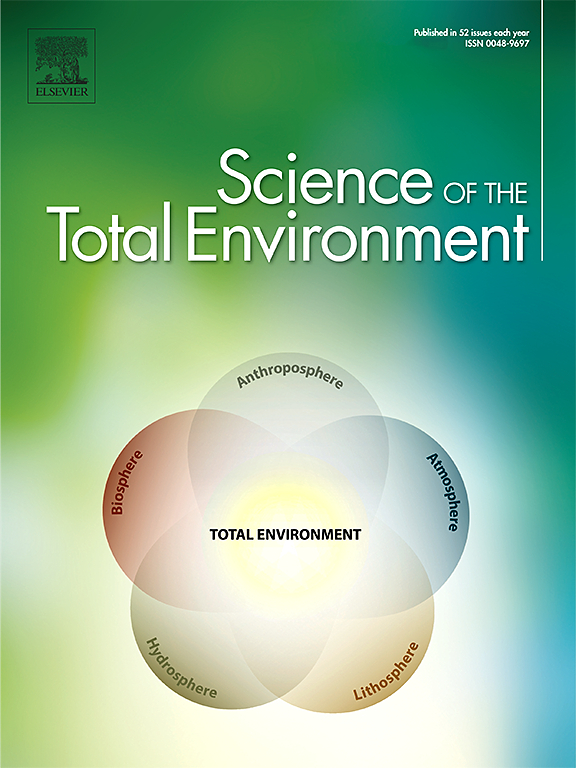Spatiotemporal evolution and influencing factors of blue carbon resilience in the East Java, Indonesia
IF 8.2
1区 环境科学与生态学
Q1 ENVIRONMENTAL SCIENCES
引用次数: 0
Abstract
Global climate change occurring in the 21st century is causing a series of unprecedented environmental problems. Preservation and rehabilitation of blue carbon ecosystems can be one of the real efforts to mitigate climate change. This study considers a systematic and comprehensive study in characterizing the spatiotemporal evolution of blue carbon, the distribution of carbon emission and carbon sequestration, blue carbon balance ratio, blue carbon resilience index, and revealing the mechanism of blue carbon resilience controlled by various controlling variables of mangrove ecosystems in East Java from 2000 to 2020. The results show that the rate of mangrove forest expansion is relatively stable under the situation of increasing expansion and intensification of anthropogenic activities. Carbon emission and carbon sequestration by mangroves increased gradually, with blue carbon balance ratio dominated by carbon surplus, and carbon deficit clustered in large mangrove areas with low amount of carbon emission. The blue carbon resilience index showed a decreasing trend during the study period, which could threaten the existence of mangrove ecosystems. Spatial econometric models such as the Spatial Durbin Model (SDM) can reveal the direct and indirect effects as well as the total spatial effects of mangrove ecosystem control variables on the level of blue carbon resilience during the study period, both in the short and long term. The SDM decomposition results are detailed in this article.

求助全文
约1分钟内获得全文
求助全文
来源期刊

Science of the Total Environment
环境科学-环境科学
CiteScore
17.60
自引率
10.20%
发文量
8726
审稿时长
2.4 months
期刊介绍:
The Science of the Total Environment is an international journal dedicated to scientific research on the environment and its interaction with humanity. It covers a wide range of disciplines and seeks to publish innovative, hypothesis-driven, and impactful research that explores the entire environment, including the atmosphere, lithosphere, hydrosphere, biosphere, and anthroposphere.
The journal's updated Aims & Scope emphasizes the importance of interdisciplinary environmental research with broad impact. Priority is given to studies that advance fundamental understanding and explore the interconnectedness of multiple environmental spheres. Field studies are preferred, while laboratory experiments must demonstrate significant methodological advancements or mechanistic insights with direct relevance to the environment.
 求助内容:
求助内容: 应助结果提醒方式:
应助结果提醒方式:


